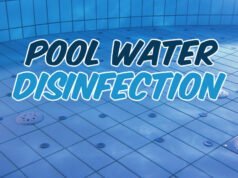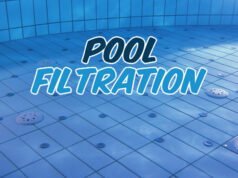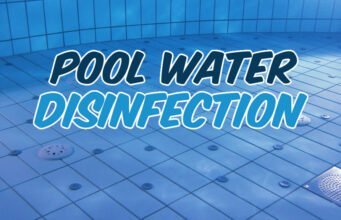Recalling our last post… We talked about there being three pillars for maintaining pool clarity:
- Filtration
- Circulation
- Disinfection
We have already discussed the importance of pool filters in other posts, and like filtration, circulation is one of the pillars of pool cleanliness.
We covered the first pillar in this post:
Today we will talk about the second pillar…
Water Circulation in the Pool.
In our first post in this series, we mentioned that if the water in your pool moved like a river, filtration and disinfection might not be necessary.
This is because algae and bacteria cannot grow in a pool with constantly moving water. The pool’s water circulation system is essentially composed of a network of pipes, a motor pump, and a filter.
Pool designs are developed so that the circulation system moves water from the surface to the bottom of the pool, ensuring that there is no stagnant water in the pool.
The Bottom Drains
This is why there is a drain at the bottom of the pool as well as return devices.
That’s also why they’re always in the same positions: the bottom drain on the pool floor and the return devices on the walls near the edge.
If you let the pool filter only through suction, as if your pool didn’t have a bottom drain, you’re probably only filtering the top water.
This way, the deepest part may favor the growth of algae and you will probably be one of the readers of our complete guide to eliminating algae from the pool.
Automatic Cleaners
Pool cleaning robots can be used to compensate for the inefficient water circulation in the pool.
In addition, return devices can be directed downward to move this part of the pool that suffers from lack of water circulation.
The Skimmer
One of the most common problems in pool water circulation is the absence of the skimmer.
If your pool also doesn’t have this device installed, you may have trouble skimming the surface.
Excessive leaves, insects, and other types of debris will be constant.
To solve this problem, improving circulation and avoiding dirt accumulation on the water line, you can check the possibility of installing a skimmer.
Nowadays, it is a possible solution since the market offers portable skimmers and floating skimmers.
Return devices
Most pools have at least two return devices.
They are installed in strategic locations to optimize water circulation inside the pool.
The ideal is to have both devices working: the bottom drain and the skimmer.
An error that can occur when determining where the return devices will be located is to have them direct water against each other. A serious mistake!
Return devices cannot be installed in opposite directions!
This results in extremely impaired circulation, and cleaning the pool will be considerably more difficult, especially in areas where water circulation is not efficient.
An advantage of creating an efficient circulation flow that also moves the deepest part of the pool is the facilitation of cleaning, as no leaf or any type of dirt will be able to stay in a certain spot on the bottom while the pump is running.
Creating a flow on the surface also prevents these leaves from reaching the bottom!
Those who deal with pools know that leaves, when they fall into the pool, spend some time on the surface before sinking.
With the skimmer in operation, these leaves will be sucked up before they even submerge.
The circulation of water in the pool
To test the flow of circulation in the pool, it is possible to use certain non-toxic dyes.
After putting the dye in the pool, just wait and check how it moves and mixes with the water.
This way, it is possible to make sure that there is no area where circulation is ineffective.
The circulation of water in large pools can be improved with adjustments to the pool’s own valves.
Usually, large pools have more than one skimmer and several bottom drains.
Reducing the water flow in a specific skimmer can favor the suction in others, and the same goes for the bottom drains.
Just partially close the valves that are pulling the water too strongly until reaching a balance.
This type of procedure is common in large pools to prevent the devices closest to the pump from being used more intensely than those farther away from the machinery room.
The same can be applied to return devices, although most pools are built without valves in the return piping.
MAKE SURE NOT TO RESTRICT THE DISCHARGE PIPE AS THIS WOULD CERTAINLY DAMAGE THE PUMP.
If you don’t know how to deal with the machine room, contact a specialized company!
Circulation: one of the pillars of pool cleaning
Water circulation is one of the pillars for a consistently clear pool and it’s easy to notice its importance when it’s inefficient.
A pool with poor circulation is harder to clean and maintain.
It’s worth taking a look at the water circulation in your pool because these three pillars support each other and, if one of them is not working properly, the other two might be excellent but the pool will probably not have that sparkle that everyone likes!
Working to optimize water circulation in the pool means spending less money on disinfection, less energy on filtration, and less time manually cleaning the pool.
We hope you enjoyed learning a bit more about the importance of water circulation in the pool.
Check out the complete series on the pillars for a crystal clear pool:
- Filtration
- Circulation
- Disinfection
See the next text in this series where we talk about the third, last, and most important pillar of a healthy pool: disinfection.








